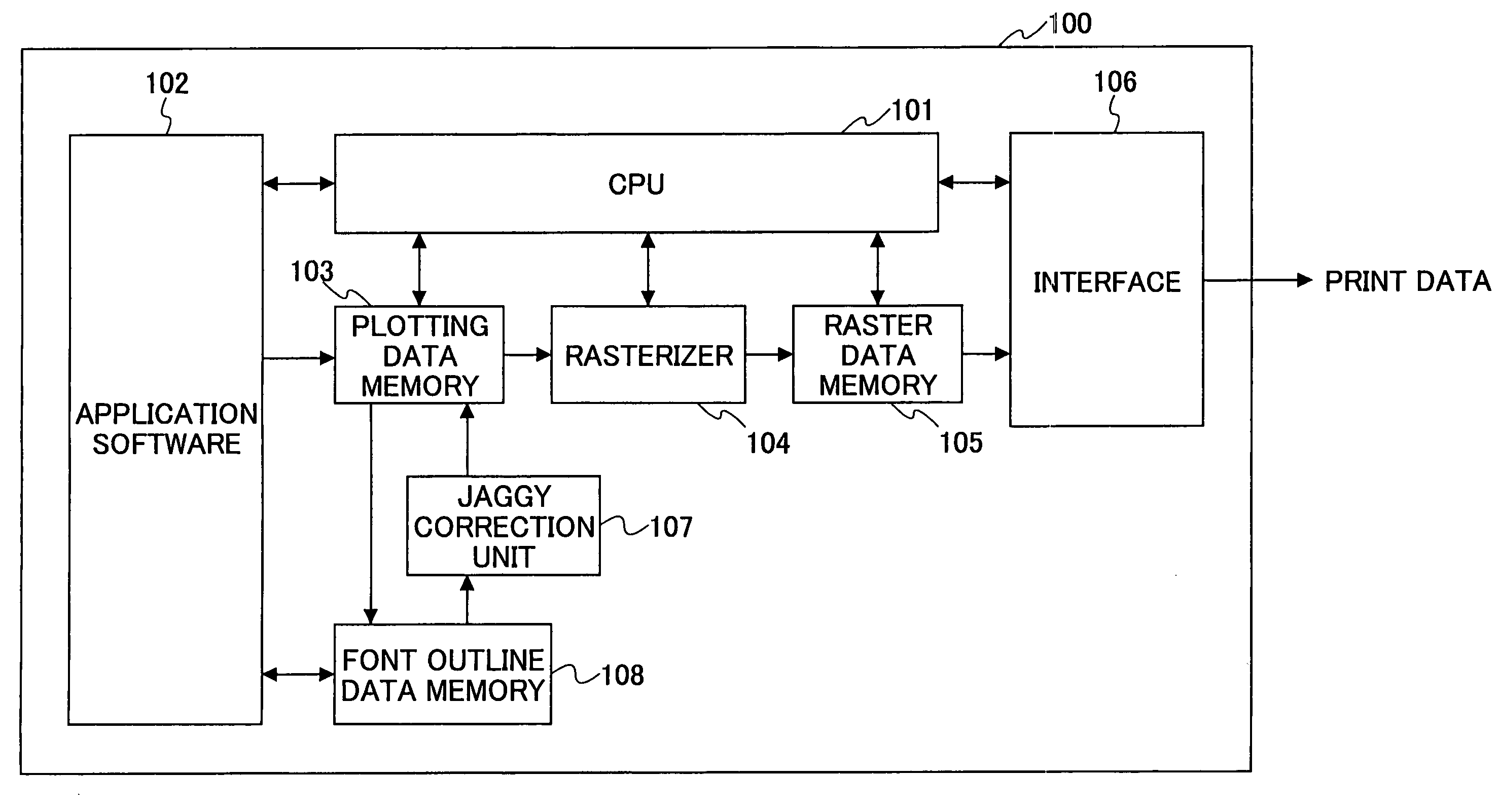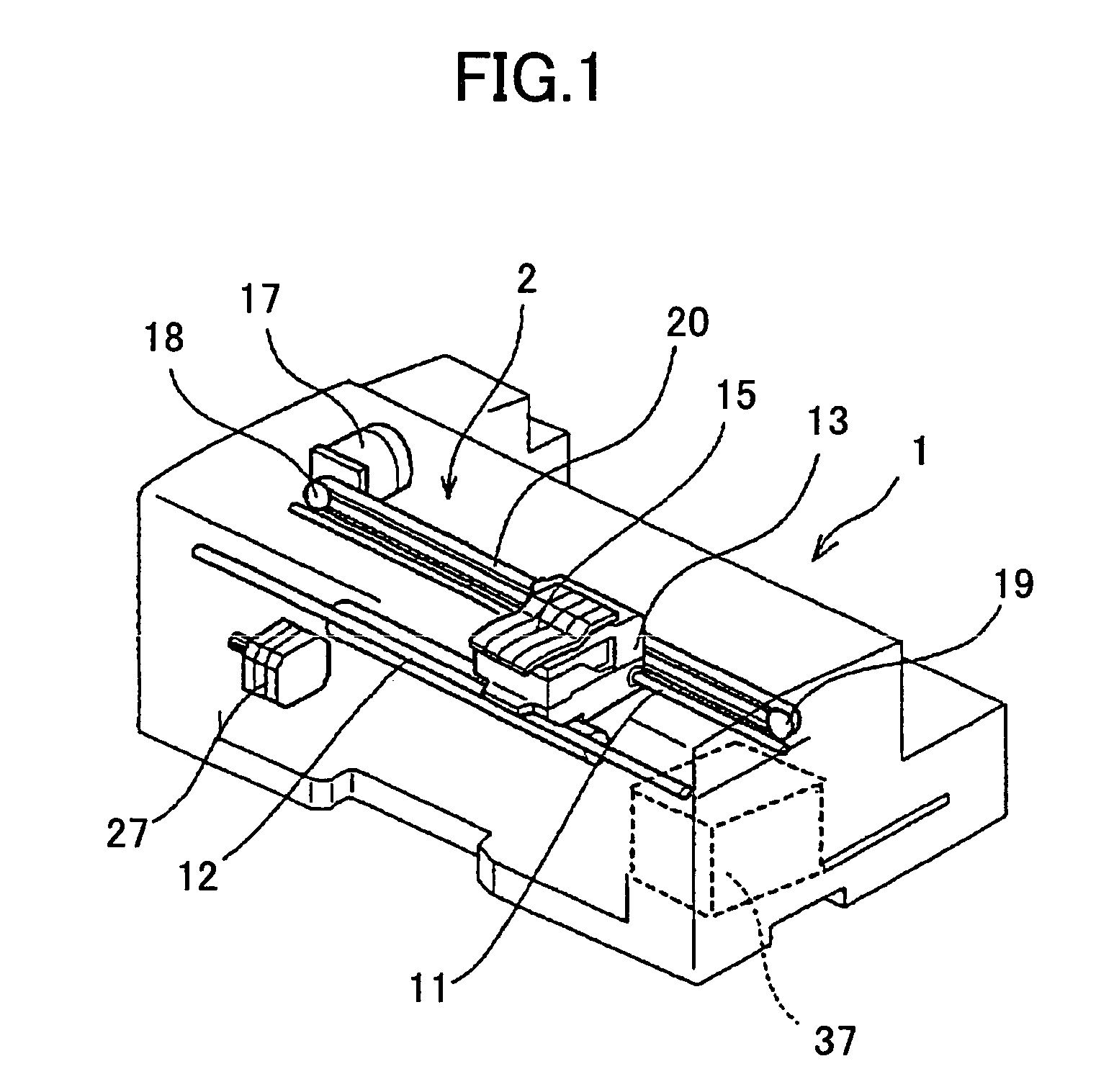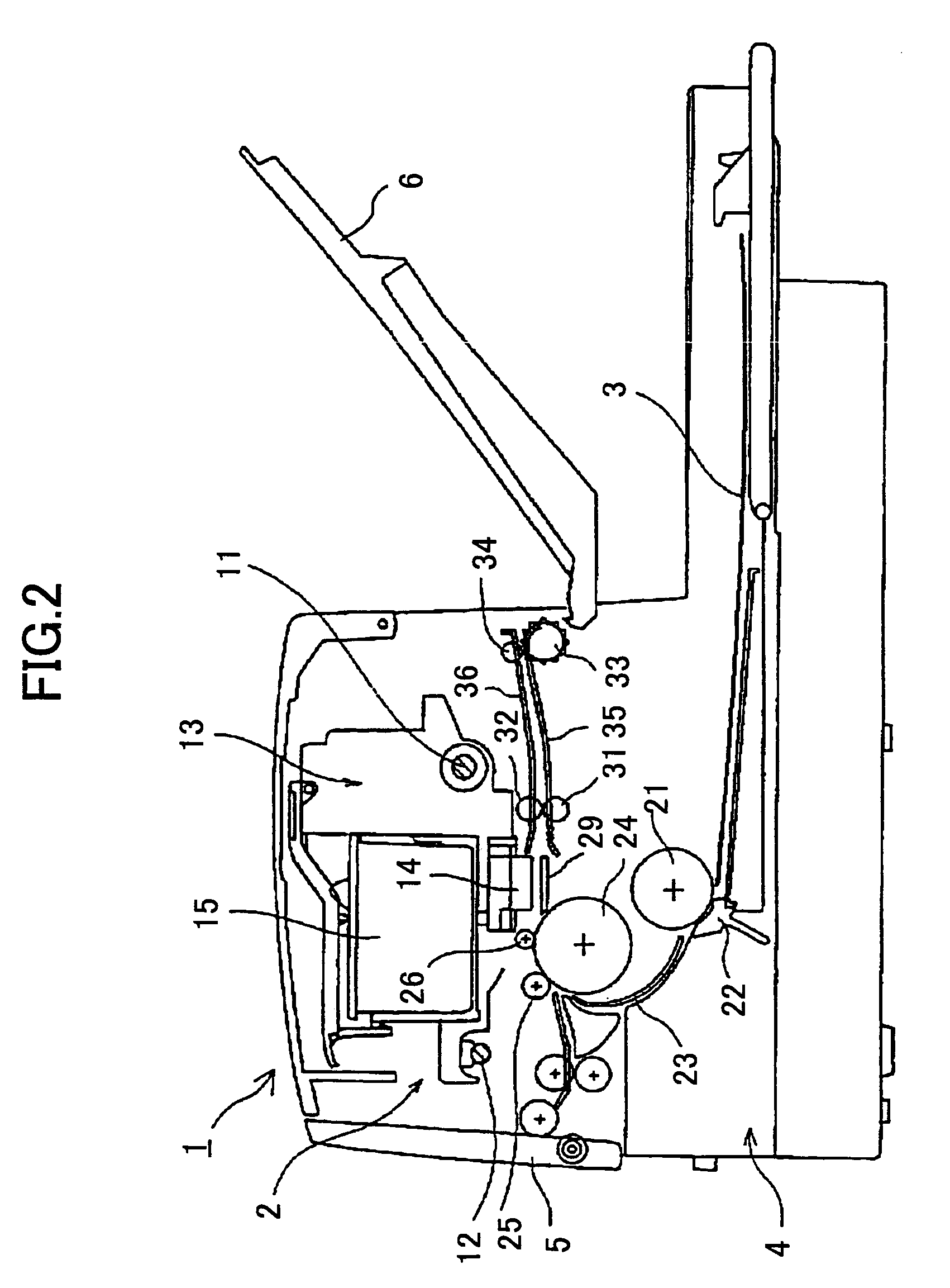Image processing apparatus, image forming apparatus, printer driver, image processing method and computer-readable storage medium
a technology of image processing and printer, applied in the direction of image enhancement, digitally marking record carriers, instruments, etc., can solve the problems of increasing the production cost of the ink-jet head, negligible noise generated by the ink-jet printer during recording, and large size of the ink-jet printer as a whole, so as to achieve satisfactory picture quality
- Summary
- Abstract
- Description
- Claims
- Application Information
AI Technical Summary
Benefits of technology
Problems solved by technology
Method used
Image
Examples
first experiment
(First Experiment)
[0290]The font data added with the small ink drops in the manner described above were printed on plain paper using the ink-jet head under the following conditions, and the picture quality (character quality) was evaluated.[0291]Head: 384 nozzles / color[0292]Nozzle pitch=84 ìm (corresponding to 300 dpi)[0293]Image Resolution: 300 dpi[0294]Dot Size: Large ink drop=120 ìm, Small ink drop=40 ìm[0295]Character: MS Mincho, Font size=6, 10, 12, 20, 30, 50 and 80 points[0296]Jaggy Correction Method: Change depending on inclination of oblique line portion (see Table 1 below)[0297]Printing Method: Path number (number of scans forming one line)=1, No interlacing[0298]Paper: Plain paper (My Paper TA (product name)) manufactured by Ricoh Company, Ltd.
[0299]
TABLE 1Inclination of Oblique LineJaggy Correction Method1 / 1None1 / 2, 2 / 1FIG. 18C1 / 3, 3 / 1FIG. 17B
[0300]For comparison purposes, a first comparison example in which no jaggy correction is made and the printing is made solely by ...
second experiment
(Second Experiment)
[0306]The font data added with the small ink drops in the manner described above were printed on plain paper using the ink-jet head under the following conditions, and the picture quality (character quality) was evaluated.[0307]Head: 384 nozzles / color[0308]Nozzle pitch=84 ìm (corresponding to 300 dpi)[0309]Image Resolution: 300 dpi[0310]Dot Size: Large ink drop=120 ìm, Medium ink drop=70 ìm, Small ink drop=40 ìm[0311]Character: MS Mincho, Font size=6, 10, 12, 20, 30, 50 and 80 points[0312]Jaggy Correction Method: Change depending on inclination of oblique line portion (see Table 2 below)[0313]Printing Method: Path number (number of scans forming one line)=1, No interlacing[0314]Paper: Plain paper (My Paper TA (product name)) manufactured by Ricoh Company, Ltd.
[0315]
TABLE 2Inclination of Oblique LineJaggy Correction Method1 / 1None1 / 2, 2 / 1FIG. 18C1 / 3, 3 / 1FIG. 32B
[0316]For comparison purposes, a first comparison example in which no jaggy correction is made and the pri...
PUM
| Property | Measurement | Unit |
|---|---|---|
| grain diameter | aaaaa | aaaaa |
| diameter | aaaaa | aaaaa |
| voltage | aaaaa | aaaaa |
Abstract
Description
Claims
Application Information
 Login to View More
Login to View More - R&D
- Intellectual Property
- Life Sciences
- Materials
- Tech Scout
- Unparalleled Data Quality
- Higher Quality Content
- 60% Fewer Hallucinations
Browse by: Latest US Patents, China's latest patents, Technical Efficacy Thesaurus, Application Domain, Technology Topic, Popular Technical Reports.
© 2025 PatSnap. All rights reserved.Legal|Privacy policy|Modern Slavery Act Transparency Statement|Sitemap|About US| Contact US: help@patsnap.com



